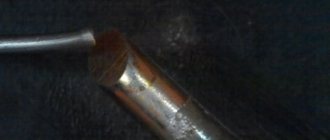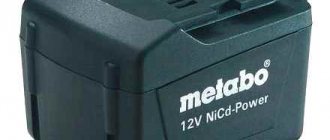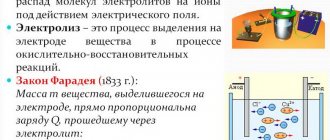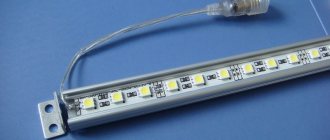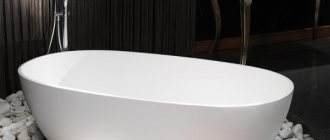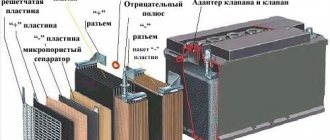Historical information
The chemical element has been known to people since ancient times. One of the first methods of metal extraction mastered by man was the smelting of lead. The first archaeological finds confirming this were lead beads found from the times of Çatalhöyük (modern Turkey). The items date back to 6400 BC.
The oldest lead figurine of a girl in long clothes was excavated in Egypt. It dates back to the time of the first dynasty of the pharaohs (3000 BC).
Lead pipes made up the ancient Roman water supply system. In the Ancient Roman Empire, up to 80 thousand tons of this metal were smelted annually. In Rus', since ancient times, lead has been used as roofing for cathedrals and churches.
Since time immemorial, the low melting point of lead has made it possible to obtain the metal and manufacture products of any shape from it.
Note! Over the course of 20 years, the Industrial Revolution since 1840 has raised the volume of annual lead smelting in the world from 100 to 250 thousand tons per year.
Melting at home: preparation
It is necessary to select a suitable container; it is desirable that its handle is made of heat-resistant material. An old teapot, coffee pot or other disused kitchen utensil with a comfortable handle is good for these purposes. You can also melt the material in an old cast iron pan, and use a deep spoon with a long handle to pour it.
Read also: Why does the light blink when the light is on?
In a pinch, a tin can will do. But here you can’t do without pliers. They can be used to remove heated dishes from the heat and pour molten lead into the prepared mold. But this should be done very carefully. For convenience, it is better to make a groove on the rim of the tin. Then the molten metal will flow out in a thin stream without smudges and exactly in the right place. The place for gripping with pliers should also be equipped in advance so as not to perform unnecessary manipulations with dishes and heated metal.
The lead, prepared and purified as much as possible from foreign impurities, is crushed into small pieces if possible. This way it will melt faster. The container is securely installed above the burner and warmed up. This is done to burn out moisture and unwanted impurities from its surface.
Being in nature
Soldering aluminum
Plumbum is usually not found in its pure form. It is found in more than 100 different minerals in the form of intermetallic agglomerates. Lead is present in uranium and thorium veins. Large accumulations of lead-zinc ores have been discovered and are being developed in Transbaikalia and the Primorsky region. Lead is mined in various deposits in the Urals and Norilsk.
The largest deposit with a high content of lead is located in the uranium ores of the Kohistan Ladakh arc (northern Pakistan).
Fossil lead
Receipt
How to solder a wire without a soldering iron
The raw materials for lead extraction are rocks that include helenite. The heavy metal smelting process consists of several phases. From the initial raw material, a concentrate containing from 40 to 70 percent plumbum is isolated by flotation. Next, manufacturers take different paths.
One of the ways to transform the product into werkbley (blank lead) is smelting using the regeneration method. Another method is that the metal is restored from the oxide by melting the raw material in a water jacket heater.
The resulting werkley containing 90% lead is purified from copper. Then arsenic and antimony are removed by alkaline refining. Then silver and zinc are isolated. The effects of magnesium and calcium exclude bismuth. As a result, lead with a purity of 99.8% is obtained.
Global lead production based on research by international organizations for 2005
| Manufacturer country | Volume, kilotons |
| Countries of Europe | 2220 |
| China | 1430 |
| Russian Federation | 1120 |
| South Korea | 650 |
| Kazakhstan | 570 |
| Ukraine | 410 |
Technological properties and characteristics
The characteristics of the metal can be represented by the list:
- Lead density and mass;
- Lead smelting temperature;
- Mechanical properties;
- Corrosion resistance.
Lead density and mass
The density of the metal is 11342 kg/m3. This means that a metric cube of lead weighs 11.342 tons. Its large specific gravity allows it to be used as payloads in various devices.
Lead smelting temperature
Molten metal in its pure form has a temperature of about 400 degrees. In this state, lead has fluid properties. The casting qualities make it possible to pour lead in a liquid state into molds of complex configurations.
Pouring a mold with lead
The metal boils when heated to 1750 degrees. During boiling, volatile fumes arise in the form of lead dust and oxide vapors, which can cause severe poisoning to the human body.
Mechanical properties
The chemical element has softness and ductility, which allows cold rolling to achieve the state of thin foil. Cold deformation does not affect the change in mechanical properties.
Corrosion resistance
The chemical inertness of the element is close to that of noble metals. In the air, plumbum practically does not corrode. The rapidly forming oxide film on the surface of lead puts an insurmountable barrier to corrosion processes.
Aggressive environments for lead are hydrogen sulfide, coal anhydrite and sulfuric acid. Under their influence, the metal is actively destroyed.
Security measures
When melting lead, one should take into account the increased fluidity of the liquid material, which causes burns if it comes into contact with the skin. Melt spilled on clothing impregnates the fabric, which increases thermal damage. If a heated substance gets on wooden or plastic surfaces, a fire may occur, so work should be performed at a distance from interior items and using protective clothing and gloves that are resistant to impregnation with liquid lead.
Please note that it is strictly forbidden to cool molten metal with water. When liquid gets in, there is an intense release of small hot particles, causing burns and leading to damage to interior items in the room or to a fire. When carrying out work, it is necessary to protect your face with a mask and goggles, and also use a personal breathing device or respirator.
If melting is carried out in an enclosed space (for example, at home or in a garage), then forced ventilation must be provided. Inhalation of metal fumes leads to a gradual accumulation of lead in the bones. The maximum permissible concentration of vapors in the atmosphere is 0.003 mg/m³, which once again proves the high toxicity of the metal and its compounds. Separately, it is necessary to mention alloys with cadmium, the vapors of which cause cancer and affect the human nervous and skeletal systems.
Application areas of lead alloys
Lead compounds are divided into high-alloy and low-alloy alloys. The former are formed by adding a large number of chemical elements that provide high strength, abrasion resistance and low shrinkage at a lower melting point.
Low alloy lead compounds are produced by small inclusions of substances such as tin, antimony, copper and cadmium. This achieves increased resistance of the alloy to corrosion processes in a polluted atmosphere, inorganic acidic environment.
The alloys are used in acid and alkaline batteries, as shells for both high-power and low-voltage cables. Compounds of antimony or copper with lead are used for the production of pipelines, sheet lining of various devices and protective mats against radiation damage.
Home and industrial methods
Without tin-lead solders (PLS), the existence of such an industry as radio engineering is impossible. Many industrial products contain POS coatings.
Tin-lead solders
The industry supplies the market with solder product:
- cast pigs;
- wire;
- foil tape;
- solder tubes with flux;
- powder or paste.
Alloys containing 90% tin and 10% lead are used for soldering products, which are then electroplated with gold or silver. The melting point of pure tin is 2310 C. Therefore, the solder will melt when heated to 2200 C.
Tubular solder with flux
Tin-lead POS with a predominance of tin in its composition (61%) has a lower melting point - 191%. POS 61 is used to cover contact groups in various devices; it is also used to process thin wire for windings of electric motor armatures and transformer coils.
Important! Taking into account the temperature at which tin melts, the % lead content in the alloy is regulated. This achieves a comfortable temperature regime, at which the tin-lead solder quickly turns into a liquid state.
POS 30 melts at 256 degrees. The compounds are less durable than products with a higher tin content.
10 percent solder is far from the temperature threshold at which tin melts. Therefore, POS 10 is used as a durable material for tinning large metal surfaces.
Melt preparation and pouring
In industrial conditions, the melt is prepared in special crucibles, which are placed in electric furnaces (equipment equipped with electronic measuring equipment that maintains the desired melting mode).
In radio engineering production, special heating baths are used to prepare solder for printed circuit boards of radio circuits.
In workshops and at home, solder is melted with a soldering iron tip. To prepare a large volume of molten metal, it is placed in a copper vessel on an electric stove. The alloy in the form of scrap is loaded into the melting bath gradually, as the next layer of metal melts.
Fishing varnishes
Avid fishermen at home cast fishing sinkers and spoons by pouring molten tin into clay molds. The spoons are then coated with waterproof varnishes.
Interesting. Fishing varnish is used to protect against the appearance of oxides on various figurines and other products.
Fishing varnish
Melting process
The following is used as a heat source for melting scrap:
- a fire, with a smelter stand placed above it;
- blowtorch, it is fixed in a stationary position;
- a gas burner, with which the metal is heated both from below and from above, alternately;
- kitchen stove (gas or electric).
The container is installed so that the flames do not extend beyond the bottom area.
Lead smelting begins with a preparatory stage: you need to prepare a smelting container and grind the scrap. It is cleaned of impurities, possible moisture, and contaminants. Then cut into small pieces with a knife or metal scissors. It is difficult to break lead pieces; they bend well. The smaller the scrap, the faster it will melt. It is recommended to gradually add it to the melting tank. When the pieces are loaded into the melt, the risk of the melt overheating to the volatility point is reduced. You should not heat the pieces to a reddish tint, this is a signal that they are forming toxic volatile compounds.
If a container with thick walls is used for the melt, it is preheated. Dry the tin enough. The melting pot is filled no more than half, preferably 1/3. A thick layer will not heat up evenly.
The melting pot must stand firmly on the burner and not wobble. After the scrap melts, a slag cap forms on the surface. It is removed before pouring the melt into the mold. It is preheated so that there is no sharp temperature contrast. The melt is poured unevenly into a cold mold. Potholes, folds, and other defects form on the casting surface.
Methods for getting rid of oxide
When exposed to air, lead products become covered with an oxide film. This is the result of the ionic interaction of oxygen and lead atoms. The oxide becomes not only protection against an aggressive environment, but also a barrier to electric current.
Important! Mechanical cleaning will not bring the desired result. The film will recover quite quickly. Sunflower oil, graphite grease or varnish can help get rid of oxides.
At home, the product is placed in a vessel with sunflower oil for about five minutes. After which it is removed from the vessel and allowed to dry.
In industrial conditions, graphite lubricant is used. The lead surface treated with the product retains its shiny appearance for a long time.
Main lead compounds
Lead oxides
Lead oxides are predominantly basic or amphoteric in nature. Many of them are painted red, yellow, black, and brown. In the photograph at the beginning of the article, on the surface of the lead casting, tarnish colors are visible in its center - this is a thin film of lead oxides formed due to the oxidation of hot metal in air.
Lead halides
Lead chalcogenides
Lead chalcogenides—lead sulfide, lead selenide, and lead telluride—are black crystals that are narrow-gap semiconductors.
Lead salts
Lead sulfate Lead nitrate Lead acetate
- Lead sugar is a very toxic substance. Lead acetate, or lead sugar, Pb(CH3COO)2·3H2O exists in the form of colorless crystals or white powder, which slowly erodes with the loss of water of hydration. The compound is highly soluble in water. It has an astringent effect, but since it contains poisonous lead ions, it is used externally in veterinary medicine. Acetate is also used in analytical chemistry, dyeing, calico printing, as a silk filler, and for the production of other lead compounds. Basic lead acetate Pb(CH3COO)2·Pb(OH)2, a less water-soluble white powder, is used to decolorize organic solutions and purify sugar solutions before analysis.
